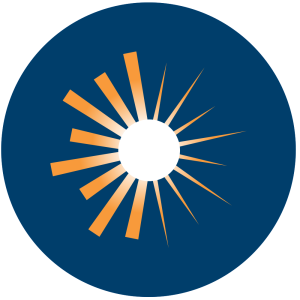Planning for retirement should be a top priority for everyone. Effective retirement planning ensures that you are fully prepared for life after work, allowing you to enjoy and fulfill your retirement life.
In the United States, there are various retirement savings plans, such as the 401(k). You have likely heard of a 401K but may be unsure of how it works. In this article, we will examine what a 401(k) is and how 401(k) retirement planning works.
What Is a 401(k)?
A 401(k) is a tax-advantaged retirement savings plan that employers provide. Depending on the plan type, employees contribute a portion of their paycheck either before or after taxes are deducted. These contributions can be invested in different investment options, allowing funds to grow with tax advantages.
Types of 401(k) Plans
There are two types of 401(k):
Traditional 401(k): In a traditional 401(k), contributions are made before taxes. This means that the money you contribute is not taxed upfront. These taxes are paid on retirement withdrawals, which are typically taxed as ordinary income.
Roth 401(k): Contributions are made after taxes. Unlike traditional 401(k)s, you pay taxes on your initial contributions. However, qualified retirement withdrawals, including earnings, are tax-free.
How Does a 401(k) Work?

Contributions
A 401(k) plan allows employees to decide how much to contribute (within IRS limits) from their salaries. This option enables individuals to adjust their contributions according to their current budget and/or future financial objectives. Once enrolled in the plan, contributions are deducted automatically from payroll. Employees can change the amount of their contributions through the portal or their employer’s HR department.
Employers may also provide a matching contribution option, essentially “free money,” to help boost retirement savings. For example, your employer may match 50% of your contributions up to 6% of your salary, which means that if you contribute 6%, they will add 3%.
These matching options vary, with some employers matching dollar for dollar up to a cap and others subject to a vesting schedule, in which employees gradually gain ownership of the employer’s contributions over time.
Investment Option
A 401(k) enables you to invest in various investment options, including mutual funds, ETFs, target-date funds, and so on. These options pool money from investors and utilize professional management to purchase a diverse range of assets, thereby providing diversification to mitigate risks.
Employees can select their allocation based on risk tolerance and retirement timeline. For example, those nearing retirement can select target-date funds that automatically adjust their asset allocation (from aggressive to conservative) as the employee approaches retirement. Younger employees, on the other hand, may opt for higher-risk, growth-oriented funds.
401(k) Growth Over Time

Contributions to a 401(k) plan grow over time due to a combination of tax-deferred savings, compounding returns, and long-term market performance, significantly increasing the account’s value.
In a traditional 401(k), growth is tax-deferred, which means no taxes are applied on investment gains, dividends, or interest until the day of withdrawal. With a Roth 401(k), withdrawals are tax-free if certain conditions are met, including being at least 59½ years old and having held the account for at least five years.
Compounding interest helps funds grow when investments, such as stocks, bonds, or mutual funds, generate additional earnings through dividends and capital gains. The longer one invests, the greater the compounding effect. For example, if you contribute $5,000 at age 25 and earn an annual return of 6%, your investment will be worth $51,428.50 by age 65.
401(k) Contribution Limits and Rules
The 2025 contribution limit for traditional and Roth 401(k) plans combined is $23,500 for individuals under 50, with a “catch-up” contribution of $7,500 permitted for those 50 and older, totaling $31,000.
Moreover, under the SECURE 2.0 Act, the 2025 higher catch-up contribution limit for participants aged 60 to 63 has changed from $7,500 to $11,250.
Vesting Schedules
Vesting schedules determine when employees become fully vested in the employer’s contributions to their 401(k) plan. Employers establish these vesting schedules in accordance with the Internal Revenue Service (IRS) guidelines.
There are three types of vesting schedules: Cliff vesting, graded vesting, and immediate vesting.
Cliff Vesting
- Employees become fully vested after a specified period (typically three years, according to IRS rules). For example, 0% vested for two years, then 100% vested after three years.
- Encourages retention because early departure means losing employer contributions.
Graded Vesting
- Vesting is gradual. For example, 10% vests after two years, 30% after three years, and 100% after six years (the maximum duration allowed by IRS regulations).
- Employees who leave early can keep some of their contributions as a reward for partial tenure.
Immediate Vesting
- 100% vested immediately upon contribution.
- There is no risk of forfeiture, and employee benefits are maximized.
Withdrawals and Penalties
You can begin withdrawing funds without penalty at age 59½, regardless of whether you are retired or still working. However, there are some exceptions.
For example, the 55 rule exempts you from paying an early withdrawal penalty if you leave your job voluntarily or involuntarily on or after age 55. This rule only applies to the 401(k) from the employer from which you retired at age 55 or older; it does not apply to previous employers’ 401(k)s or individual retirement accounts. When you transfer your 401(k) to an IRA, the Rule of 55 is no longer applicable.
For traditional 401(k)s, required minimum distributions (RMDs) begin at age 73. You must take your first Required Minimum Distribution (RMD) at the age of 73 on or after April 1 and every year thereafter by December 31. The RMD amount is calculated using your 401(k) balance of December 31 of the previous year, divided by a life expectancy factor from the IRS life expectancy table.
Individuals who withdraw traditional 401(k) retirement funds before the minimum age of 59½ face a 10% early withdrawal penalty. There are some exceptions, such as withdrawals for medical emergencies, if you become disabled, beneficiaries’ withdrawals due to death, and payments to an ex-spouse or dependent under a Qualified Domestic Relations Order (QDRO).
Benefits of 401(k) Retirement Planning

The key benefits of 401(k) retirement planning include tax incentives and options such as employer matching and automated saving and investing.
Tax Advantages: Contributing to a 401(k) allows taxpayers to take advantage of tax benefits such as pre-tax contributions, which are deducted from your paycheck before taxes, lowering your taxable income for the year, and tax-deferred growth, which allows you to grow your savings over time.
Employer matching: The 401(k) plan offers options such as employer matching contributions, which enable employers to contribute to your savings plan, thereby increasing your savings.
Automated saving and investing: With an automated system and various investment portfolios, you can increase the consistency and discipline of your savings while diversifying and setting your portfolio to your risk tolerance and retirement timeline.
How Butson Financial Advisors LLC Can Help
A 401(k) retirement plan is a powerful tool for building long-term wealth due to its unique benefits, making it a cornerstone of retirement planning for many Americans.
To maximize the benefits of this savings plan, proper 401(k) retirement planning is necessary. This is where Butson Financial Advisors LLC can assist. We can help you understand the options so that you can choose the best plan for your current and future financial goals.
Contact Buston Financial Advisors LLC today!

